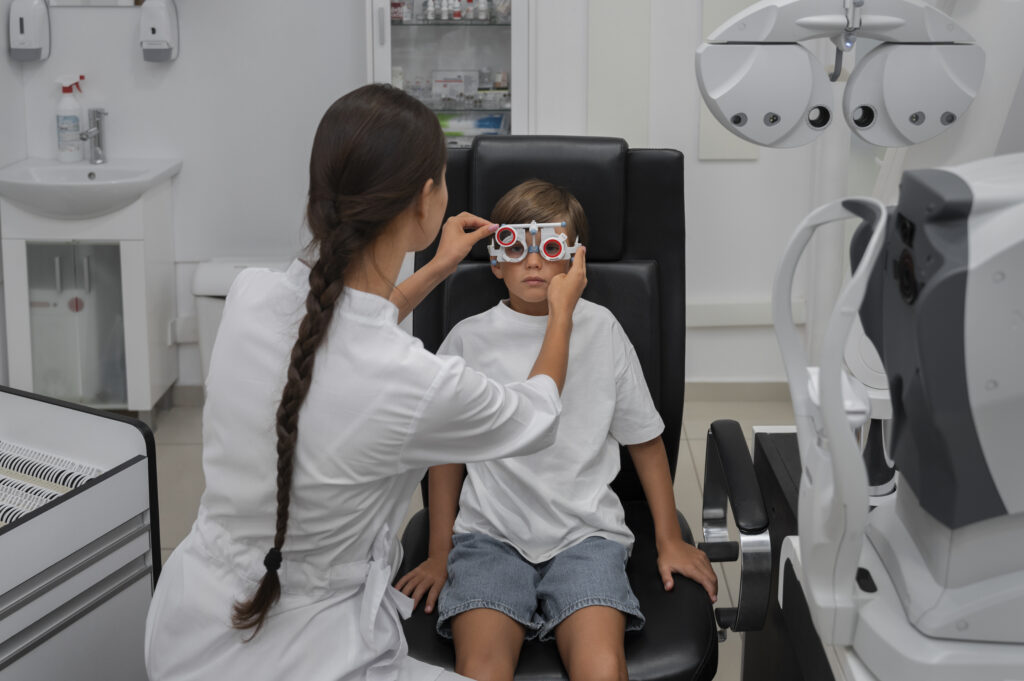What Are Routine Eye Exams in Children?
Routine eye exams in children are regular check-ups to assess a child’s vision and eye health. These exams help spot vision problems early. As a result, children can get the care they need before issues affect learning or daily life. Eye doctors use simple tests to check how well a child sees and how their eyes work together.
Why Are Routine Eye Exams Important for Children?
Many children do not know they have vision problems. Often, they think everyone sees the same way. Because of this, routine eye exams in children are very important. Early checks help find issues before they cause trouble at school or home. According to the CDC, early detection can prevent up to 80% of vision loss in children. Also, healthy eyes help kids learn, play, and grow with confidence.
Common Signs and Symptoms of Vision Problems in Children
Sometimes, children show signs of vision problems. However, these signs can be easy to miss. Watch for these symptoms:
If you notice any of these, schedule a pediatric vision screening soon.
Recommended Schedule and Age Milestones for Pediatric Eye Exams
Experts like the American Academy of Ophthalmology and the WHO suggest these milestones for children’s eye health:
However, children with risk factors may need more frequent checks. For example, a family history of eye problems or premature birth can increase risk.
What to Expect During a Child’s Eye Exam
Knowing what happens during a routine eye exam in children can help parents and kids feel at ease. Here is a step-by-step look:
The process is gentle and safe. Most children find it quick and easy.
Early Detection: Benefits and Potential Conditions Identified
Early detection of eye problems in kids offers many benefits. For instance, it can prevent learning delays and boost confidence. Routine eye exams in children can find conditions such as:
When found early, many of these issues can be treated or managed well. This helps protect your child’s vision for life.
Tips for Parents to Prepare Children for Eye Exams
Preparing your child for an eye exam can make the visit smoother. Try these tips:
With a little preparation, most children feel comfortable during their pediatric vision screening.
Prevention and Eye Health Tips for Children
Good habits help protect children’s eye health every day. Consider these tips:
Regular routine eye exams in children, along with these habits, support strong vision and healthy eyes.
Conclusion: Protect Your Child’s Vision
In summary, routine eye exams in children are key for early detection and healthy vision. Early checks help spot problems before they affect learning or play. Schedule a routine eye exam with a qualified eye specialist to ensure your child’s healthy vision.
👁️ Give your child the gift of clear vision!
📞 Book an eye exam today at Mega Eye Care & Opticals.

